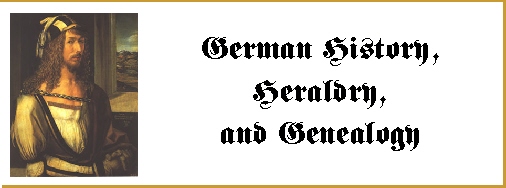

The Rünge Family
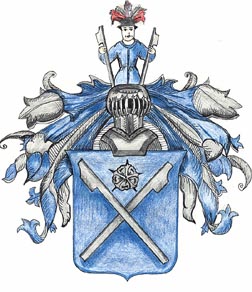
The Rünge name was well-known in Silesia for at least three hundred (300) years. There was a Abraham von Rünge in Meissen. Abraham was the municipal administrator of Oschaltz. He was thought to have owned estates called Trustewitz and Manschatz.
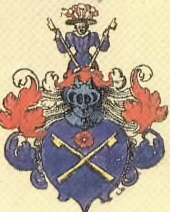 ...
...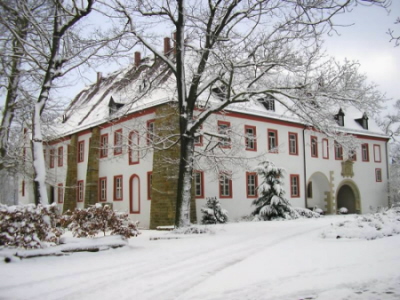 ...
... 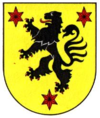
Some von Rünge were located near Bremen and Redingen. Each branch of the Rünge family had their own [but similar] coat of arms. Some branches of the family changed to the Lutheran religion, while others remained Catholic and lived in Poland.
THOMAS RUNGE AND THE ORDER OF ST. JOHN:
THE ORDER OF SAINT JOHN:
"Pilgrimage to sites regarded as holy is as old as mankind" (Riley-Smith, 3). Surviving accounts of journeys to Jerusalem date from the year 333. After Jerusalem fell to the Muslims, in 638, there were fewer visitors because of the uncertainy of safety. By the time of the first millenium, in the year 1000, people tried to again make these pilgrimages to the Holy Lands. This was most likely because of the omens about the world ending with the return of the anti-Christ and the return of their Savior to oust the Devil.
Early in the 11th century (in the 1030s) many more people were making pilgrimages to the holy city of Jerusalem. By this period in time, Count Fulk III (972-June 21, 1040) of Anjou was taking his last pilgrimage:
Fulk had ruled Anjou for fifty-three (53) years. Fulk was both cruel and devotional. He had a violent and pious temperament. He was partial to acts of extreme cruelty and penitence. His most heinous act was having his first wife (and cousin), Elisabeth of Vendôme, burned at the stake in her wedding dress, after discovering her with a goatherder in December 999.
Fulk was an old man when he decided to make what might be his last pilgrimage, as penance for his sins. The first night he stayed at the abbey of St. Maur-sur-Loire, where he learned more about the life of St. Maur. Fulk became overcome with passion and devotion in the Holy Lands. Previously Fulk was known as "the Black." Fulk died in Metz while returning from his last pilgrimage. He is buried in the chapel of his monastery at Beaulieu. By his first wife Elisabeth, he left one daughter, Adela. By his second wife (1001), Hildegard of Sundgau, he had two children, Geoffrey Martel, who was his successor, and Ermengard.
A writer said of Fulk III:
Fulk of Anjou [was] plunderer, murderer, robber, and swearer of false oaths, a truly terrifying character of fiendish cruelty, founded not one but two large abbeys. This Fulk was filled with unbridled passion, a temper directed to extremes. Whenever he had the slightest difference with a neighbor he rushed upon his lands, ravaging, pillaging, raping, and killing; nothing could stop him, least of all the commandments of God (un des batailleurs les plus agités du Moyen Âge and Wikipedia.
The First Crusade began in the 1090s. Pilgrimages led some Italian merchants to obtain, from the city's Muslim rulers, the right to maintain a Roman Catholic Church there. In connection with this church, a hospital was established for the pilgrims who contracted various diseases on their journey. When the Crusaders took Jerusalem, the master of the hospital was Gerard de Martignes (d. 1120), from Provencial France. Blessed Gerard, as founder, acquired territory and revenues for his order throughout the Kingdom of Jerusalem and beyond. The pilgrim's hospital was dedicated to St. John the Baptist and founded around 1070 as part of a Benedictine monastery.
Gerard was director of the Hospital of Notre Dame in the Holy City sometime before the Crusaders conquered Jerusalem in 1099. At first, Gerard directed the Hospital under the authority of the Abbot of St. Mary. Later he and his companions left and created a special congregation, adopted a Rule, took vows and were accredited by the Popes. The first papal bull, in their favor, is dated 15 February 1113 and refers to "Gerard, Founder and Governor of the Hospital at Jerusalem and his Legitimate Successors". This document was adminstered by Pope Paschal II (1099-1118). A sub-order was called "The Canons of the Holy Sepulchre." They were responsible for guarding the tomb of Christ. Each knight of the Hospitallers was allowed his own four horses and two esquires, while a sergeant had two horses and, from 1302, a sergeant was also allowed one squire. Blessed Gerard's skull is precerved in the convent of St. Ursula, in Vallette, Malta.
Valletta is the capital city of Malta, and is built on the northern half of the Sciberras peninsula, which separates the Grand Harbour from Marsamxett Harbour. Valletta was conceived by Grand Master Jean de la Valette, of the Knights of Saint John. When the knights agreed to make Malta their headquarters, they realized that they needed a defensible city to protect the island against the Turkish hordes. The Turks had already been driven them out of Rhodes, and the they followed them to Malta.
At the Grand Master's request, the Pope sent his own architect, Francesco Laperelli, to plan this city. Laparelli was the great Michelangelo's assistant. Laparelli arrived in Malta on December 28th, 1565. His plans, for the city, were drawn up within three days. On March 28th, 1565, Valette was officially born. Their new city was christened "Valletta" after the Grand Master Jean de la Valette.
Towards the end of 1568, a Maltese architectural engineer, Gerolamo Cassar, took charge of the building of the city. Grand Master Laparelli left for active service in Crete, and died. The body of Jean de la Valette was entombed in the church, called Our Lady of Victory, until St. John's Co-Cathedral was built. St. John the Baptist is the Patron Saint of the Order. St. John's was the Order's church and was accorded the status of Co-Cathedral in 1882 along with the Cathedral at Mdina.
The gateway to Valletta was originally dedicated to St. George. It later became known as Porta Reale and eventually Kingsgate. The original gate was demolished in 1964, when the bridge that connected Valletta to Floriana was widened.
The Crypt of the Co-Cathedral of St. John's can be reached from the Chapel of Provence. The Crypt contains many tombs of Grand Masters of St. John. Those buried there are:
Also buried in the crypt is de la Valette's English secretary, Sir Oliver Starkey.
.
|
POPE PASCAL II: Pope Pascal II was elected on August 13, 1099, and died on January 21, 1118. Pascal was born in Rainerius, Italy. He was made Abbott of St. Lorenzo fuori de Mura by Pope Gregory VII, and Cardinal Priest of St. Clemente about 1078. Pope Urban II sent him on a mission to Spain. It was during Pascal's reign that the First Crusade was proposed by Pope Urban II at Clermont, and this was initially successful when Jerusalem was captured in 1099. The period from 1116-1118 was a period of unrest in Rome, during which time, Pascal was forced to leave the city. He managed to return to Rome just before his death, which occurred in Castel Saint Angelo. |
Then The Order of the Knights Templar was established in 1119-1120. In 1128, the Order of the Knights Templar is recognized by the Catholic Church. These two Orders were united in the same cause, which was to protect and heal the Christians as they made their pilgrimage to the Holy Lands. Somewhere around 1135-1154, the Hospitallers were made independent of local religious authorities (The Muslims).
Pilgrimages were an important part of religious life in the Middle Ages. Out of devotion or penance, men and women made their way to the various shrines of Europe to pay homage to the saints or holy places. The most popular destinations were Santiago de Compostela in Spain, to Rome, and to Jerusalem. Trips to Jerusalem were dangerous, since Jerusalem had been in Muslim hands since the seventh century. In 1016, Caliph Hakin began to persecute Christians, and he tore down the Church of the Holy Sepulchre. Hakim declared himself divine in the same year, and even began to kill his own subjects. Most thought him a madman.
In 1095, the Emperor of Bzyantium, Alexius I, Comnenus (1081-1118), asked the Roman Pope to send Christian knights to help him to reconquer eastern Turkey. Eastern Turkey was lost at the Battle of Manzikert in 1071. Thus began the war on God's behalf.
The main "Soldiers of God" were the Hospitallers and the Knights Templars. However, for some reason of dispute, by the thirteenth century, the Templars and Hospitallers were fighting each other in Acre.
(more about this later)
The Order was also called the "Knights of Malta" and then became the "Knights of Rhodes." The "Sovereign Military and Hospitaller Order of St. John of Jerusalem," followed the rule of St. Augustine. After the fall of Acre, in 1291, the Order transferred to Cyprus, then to Rhodes (in 1310), and in 1530 to Malta after being driven out of Rhodes by the forces of Sulieman, "The Magnificent," in 1530. Note that Sulieman is "Solomon" in English. Sulieman was the sultan of the Ottoman Empire from 1520-1566. The Hospitallers were a major military force in the Meditteranean until they were defeated by Napoleon in 1789. The Order was given protection by Russian Emperor Paul I (1796-1801), and by 1834 it moved its headquarters to Rome with the help of Pope Leo XIII.
THOMAS RUNGE:
Now on to the Runge family connection:
Rünge was an old noble family from Pomerania and Silesia. The Rünge family was a part of the landed class of Knights. Knights were valued for their military prowess, honor, and glory. Thomas Runge, in 1545, was a Renaissance man. His position as "Prior" was begun two years before the death of King Henry VIII (1509-1547) of England. In 1511, King Henry VIII was named protector of the Order of Saint John. Thomas was part of the Johanniterorden, which included the Bailiwick of Brandenburg, that was established in the fourteenth century. The brothers of St. John gained the right to elect their own Herrenmeister, which was subject to the approval of the grand prior of Germany. After the Reformation, many of these commanders in the bailiwick adopted Lutheranism; some married; and the Herrenmeister paid homage to the Protestant duke of Brandenburg. The bailiwick was formed because of German politics. There were priories of German Bohemia, Dacia (Scandinavia), Hungary, and the Bailiwick of Brandenburg. It wasn't until much later that the Anglo-Bavarian langue (league) was established. This later group comprised the priories of Poland and Bavaria.
By this time, the concept of knights and chivalry was nearing its end. Thomas Runge was a Bailli(from Old French)/Bailie (from English) of the Order of Knights of St. John from 1545-1564 in the Baliwick of both Sonnenburg and Brandenburg. He was appointed during the reign of Boleslaus X (d. 1523), Duke of Pomerania. During this time there were two Masters of the Order. They were:
Before Thomas came Peter Rünge. Peter Rünge lived in early reign of Duke Boleslaus X. The name Peter and Jacob is repeated in both the Lutheran and Catholic lines.
TIMELINE AND FACTS:
"The Religious Peace of Augsburg coincided with the first vigorous attempts on the part of the Catholic Church to recover its former power and prestige, and to regain Germany for the Catholic faith" (Reinhardt, 213).
After Thomas Runge left as their Prior, in 1565, the Knights of Malta (the Hospitallers) were able to resist another fierce Ottoman siege, and later, they sent their galley ships against the Ottomans in the crucial battle of Lepanto on August 1571.
A Bailey was the outer defense of a feudal castle.
A Baille is the title of an executive administration authority employed to execute writs and process, make arrest, etc.
Priory or province is the administrative branch of a religious Order, run by a "Prior."
A Prior is an officer in a monastic order or religious house, sometimes next in rank to an Abbot. He is a chief magistrate, superior in rank.
I do not know if Thomas Runge fought against Sulieman I/Suleyman I (1494-1566), but it is probable that that is why he was given his position as Bailli. Thomas was the first recorded [and only] member of the Runge family that was in the Order of Saint John's as a Bailli. He was from a titled Pomeranian family.
Jacob Rünge, who came before Peter, was given the right to use the Odrowaz Clan's coat of arms, in 1480/1490 [depending on armorials]. This was because they moved from Silesia to the Podgorze. The king who granted this arm change was Kazimierz Jagiellon (1457-1492). Jacob Runge changes his name to Rünge-Sypniewski and by the 16th century, the Sypniewski family lived in Greater Poland (See my page about the Sypniewski name for more information.
SOURCES:
Barber, Richard. The Reign of Chivalry. Woodbridge, Suffolk, UK: The Boydell Press, 2005.
Cantor(editor), Norman F. The Encyclopedia of the Middle Ages. New York: Viking Press, 1999, p. 274.
Hopkins, Andrea. Knights. Mew York: Barnes & Noble, 1998.
Miller, David. Brassey's Book of the Crusades. Washington, D.C.: Brassey's, Inc., 2001
Nicolle, David. Knights Hospitaller (2) 1306-1565. Oxford: Osprey Publishing Ltd., 2001.
Pickles, Jim. The Last Battle of the Crusades: Malta 1565. London: Osprey Books (Campaign Series).
Reinhardt, Kurt F. Germany: 2000 Years: The Rise and Fall of the Holy Empire. Volume 1. New York: Continuum Piublishing Company, 1989.
Riley-Smith, Jonathan. Hospitallers: The History of the Order of St. John. London: The Hambledon Press, 1999.
Walsh, Michael J. (editor). Lives of the Popes. London: Salamander Books Limited, 1998.
Walsh, Mitchell. Warriors of the Lord: The Military Orders of Christendom. Grand Rapids, MI.: William B. Eerdmans Publishing Company, 2003.
NOTATIONS:
